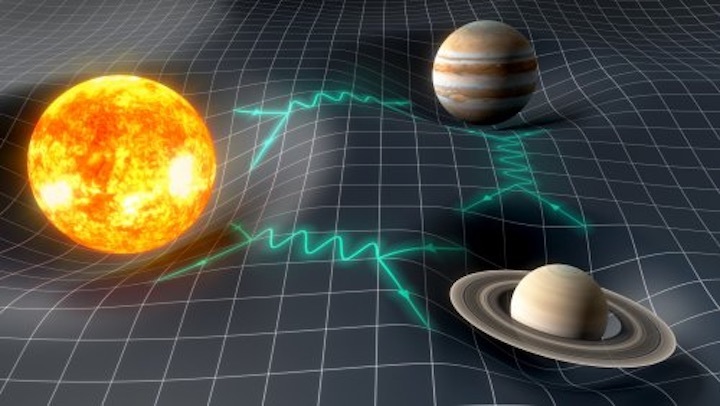11.11.2019

The motions of the planets have been used to make the best estimate yet of the upper limit of the mass of the graviton – a hypothetical particle that is a quantum of the gravitational field. That is the claim of Leo Bernus at the Paris Observatory and colleagues, who used over a century’s worth of data in their calculations.
In theories that try to provide a quantum description of gravity, the graviton mediates the gravitational force between massive objects. It can be thought of as a gravitational version of the photon, which mediates the electromagnetic force between charged objects. A correct theory of quantum gravity has yet to be developed, but it is possible to test some aspects of nascent theories including their predictions of whether the graviton has a mass.
If gravitational fields have an infinite range – as Einstein’s general theory of relativity dictates – gravitons must be massless and travel at the speed of light. However, some theories of quantum gravity suggest that the graviton could have an extremely small mass. If this were true, it would limit the range of the gravitational force and impose a subluminal speed limit on the graviton.
Orbital deviations
Previous attempts to measure graviton mass have tracked the orbital paths of planets in the solar system and checked for any deviations from paths predicted by general relativity. Recent observations of Mars’ orbit made by Clifford Will at the University of Florida, for example, suggested that the graviton mass must be less than 10-23 eV/c2. In comparison, the upper limit on the mass of the lightest known particle – the neutrino – is about 1 eV/c2.
In their study, however, Bernus’ team noted that Will’s equations did not include the possibility of the graviton having mass, which they say skewed his results towards a zero-mass result.
To address this oversight, Bernus and colleagues adapted previous theories to make the range of the gravitational field a finite and adjustable variable. They integrated this adapted theory into a model called INPOP17b, which predicts the motions of planets, moons and large asteroids in the solar system. Using the position of each body in 2000 as starting conditions, they ran the model backward to 1913 and forward to 2017. They then compared the predicted positions of the objects to their observed positions.
Their analysis gave them a 90% confidence that the range of the gravitational field cannot be any shorter than 1.8×1013 km. This corresponded to a graviton upper mass limit of 6.8×10-23 eV/c2 –heavier than Will’s result. As more and increasingly accurate data on the dynamics of the Solar System is gathered, the team hope to constrain this value even further in the future.
Quelle: physicsworld
